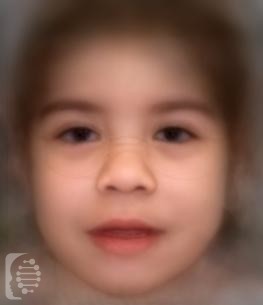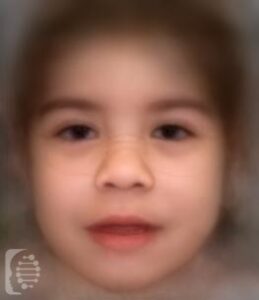What is Cantu syndrome?
Cantu syndrome is a rare serious genetic condition with symptoms that affect different systems of the body.
It was first identified in 1982 and to date, there are currently 50 cases documented worldwide.
The syndrome puts affected infants at risk for preterm and premature labor.
Syndrome Synonyms:
Hypertrichotic Osteochondrodysplasia
What gene change causes Canu syndrome?
Mutations to the ABCC9 gene cause the majority of cases.
The majority of cases are random, and the first case in a family. The condition is inherited in an autosomal dominant pattern.
In the case of autosomal dominant inheritance just one parent is the carrier of the gene mutation, and they have a 50% chance of passing it onto each of their children. Syndromes inherited in an autosomal dominant inheritance are caused by just one copy of the gene mutation.
In some cases, a genetic syndrome may be the result of a de-novo mutation and the first case in a family. In this case, this is a new gene mutation which occurs during the reproductive process.
What are the main symptoms of Cantu syndrome?
The main facial features of the syndrome include a broad nose, long philtrum, wide mouth, large heads and epicanthal folds.
Excessive hair growth is a major symptom and can be found on the scalp, forehead, back, face and the limbs.
Health conditions associated with the syndrome include congenital heart abnormalities, including PDA (patent ductus arteriosus). Individuals may also suffer from skeletal abnormalities, including scoliosis.
Some individuals present with behavioral issues.
Possible clinical traits/features:
Metaphyseal widening, Intellectual disability, mild, Anteverted nares, Narrow chest, Low anterior hairline, Low posterior hairline, Large for gestational age, Lymphedema, Long philtrum, Long eyelashes, Coxa valga, Curly eyelashes, Cuboid-shaped vertebral bodies, Finger syndactyly, Epicanthus, Large sella turcica, Erlenmeyer flask deformity of the femurs, Coarse facial features, Congenital, generalized hypertrichosis, Congenital hypertrophy of left ventricle, Deep plantar creases, Delayed skeletal maturation, Macrocephaly, Thick lower lip vermilion, Thick upper lip vermilion, Umbilical hernia, Prominent forehead, Thick eyebrow, Skeletal dysplasia, Preaxial foot polydactyly, Widened posterior fossa, Reduced bone mineral density, Hypertrophic cardiomyopathy, Hypertrichosis, Short distal phalanx of finger, Short hallux, Depressed nasal bridge, Gingival overgrowth, Cognitive impairment, Hypoplastic ischiopubic rami, Platyspondyly, Autosomal dominant inheritance, Short neck, Prominent supraorbital ridges, Wide mouth.
How is it diagnosed?
To find out if someone has a diagnosis of Cantu syndrome, it is important to have a consultation and evaluation with a clinical genetic specialist. Specialists may also suggest specific genetic testing or other types of tests to help reach a diagnosis. FDNA’s AI technology can help speed up the diagnostic process by analyzing facial features and other health information.


